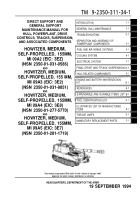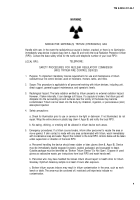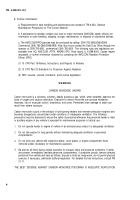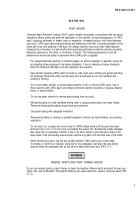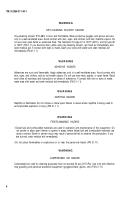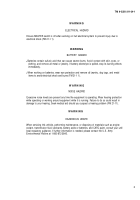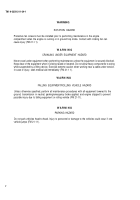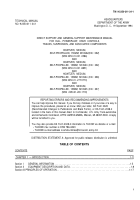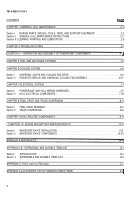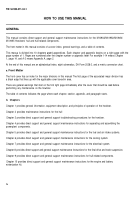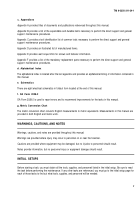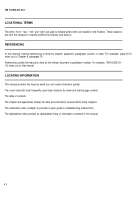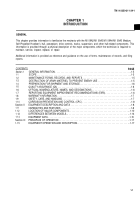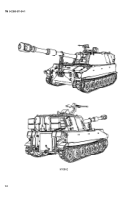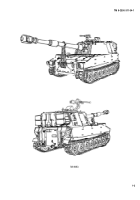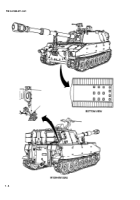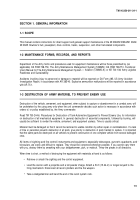TM-9-2350-311-34-1 - Page 4 of 352
TM
9-2350-311-34-1
6. Further information:
a. Requirements for safe handling and maintenance are located in TM 9-254, General
Maintenance Procedures for Fire Control Materiel.
b. If assistance is needed, contact your local or major command (MACOM) safety office(s) for
information on safe handling, shipping, storage, maintenance, or disposal of radioactive devices.
c. The AMCCOM RPO/licensee may be contacted by calling: DSN 793-2965/2969/2995,
Commercial (309) 782-2965/2969/2995. After duty hours contact the Staff Duty Office through the
operator at DSN 793-6001, commericial (309) 782-6001. The following rules and regulations are
available from HQ, AMCCOM, ATTN: AMSMC-SFS. Rock Island, IL 61299-6000. Copies maybe
requested, or further information obtained by contacting the AMCCOM Radiation Protection
Officer (RPO).
(1) 10 CFR Part 19-Notices, Instructions, and Reports to Workers
(2) 10 CFR Part 20-Standards for Protection Against Radiation
(3) NRC License, License Conditions, and License Application
WARNING
CARBON MONOXIDE HAZARD
Carbon monoxide is a colorless, odorless, deadly poisonous gas, which, when breathed, deprives the
body of oxygen and causes suffocation. Exposure to carbon monoxide can produce headache,
dizziness, loss of muscular control, drowsiness, and coma. Permanent brain damage or death can
result from severe exposure.
Carbon monoxide occurs in the exhaust of fuel-burning heaters and internal-combustion engines and
becomes dangerously concentrated under conditions of inadequate ventilation. The following
precautions must be observed to ensure the safety of personnel whenever the personnel heater or main
or auxiliary engine of any vehicle is operated for maintenance purposes or tactical use:
1.
2.
3.
4.
Do not operate heater or engine of vehicle in an enclosed area unless it is adequately ventilated.
Do not idle engine for long periods without maintaining adequate ventilation in personnel
compartments.
Do not drive any vehicle with inspection plates, cover plates, or engine compartment doors
removed unless necessary for maintenance purposes.
Be alert at all times during vehicle operation for exhaust odors and exposure symptoms. If either
are present, immediately ventilate personnel compartments. If symptoms persist, remove affected
personnel from vehicle and treat as follows: Expose to fresh air; keep warm; do not permit physical
exercise; if necessary, administer artificial respiration. For detailed first aid instructions, consult FM
21-11.
THE BEST DEFENSE AGAINST CARBON MONOXIDE POISONING IS ADEQUATE VENTILATION.
b
Back to Top

